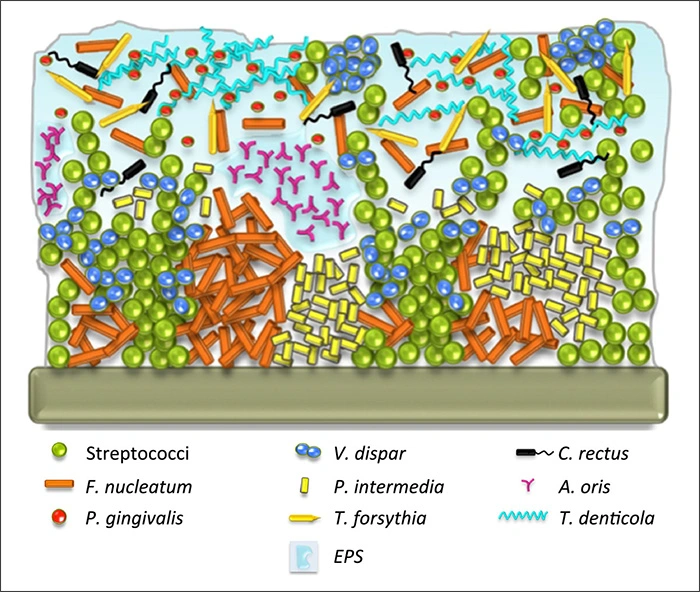- Home
/
- Continuing Education
/
- CE561
/
Systemic Diseases Correlated with Oral Disease
The Oral Microbiome & Systemic Disease
Course Number: 561
Course Contents
Systemic Diseases Correlated with Oral Disease
Two of the most common oral diseases are caries and periodontal disease.29 Different bacterial profiles have been observed depending on the age of the patient (i.e., child, adult or elderly) or type of decay (severe early childhood caries, root caries, etc.). While caries can be directly affected by shifts in the type and amount of bacteria present in supragingival plaque, periodontal disease is more closely associated with subgingival plaque.29 Periodontal disease can be considered a “polymicrobial inflammatory disorder of the periodontium.”30 The disease creates destruction in the gingival attachment, alveolar bone and teeth as a result of proteolytic enzymes released by microbes. The primary pathogens involved in periodontal disease are A. actinomycetemcomitans, P. gingivalis, P. intermedia, F. nucleatum, T. forsythia, E. corrodens, T. denticola and F. alocis (Figure 4).30 These organisms have the dubious distinction of colonizing subgingivally, which allows more direct access to the systemic circulation by travelling through the ulcerated epithelium of the periodontal pocket.
Studies have shown that many oral and systemic diseases may be linked to the oral microbiome.2 Numerous proposed linkages between oral and systemic diseases are currently being investigated. In fact, a recent systematic mapping of trial registers identified 57 systemic conditions currently being investigated for oral linkages.32 There are four systemic diseases that have been studied for a number of years that have been found to have good evidence for associations with periodontal inflammation: diabetes,24 cardiovascular disease,44-46 hypertension,33,34 and stroke.35 As a result of these identified linkages, the World Health Organization has recognized the importance of oral health in their efforts to prevent chronic disease.36 Dental professionals who are well informed of the relationship between oral and systemic health will be able to provide optimal care for their patients.
| Caries | Streptococcus mutans, Lactobacillus sp |
| Oral Cancer | Peptostreptococcus stomatis, Streptococcus salivarius, Streptococcus gordonii, Gemella haemolysans, Gemella morbillorum, Johnsonella ignava, and Streptococcus parasanguinis |
| Gingivitis | Leptotrichia, Selenomonas, Streptococcus, Veillonella, Prevotella, Lautropia, and Haemophilus |
| Periodontal Disease | A. actinomycetemcomitans, P. gingivalis, F. alocis, P. intermedia, F. nucleatum, T. forsythia, E. corrodens, and T. denticola |


